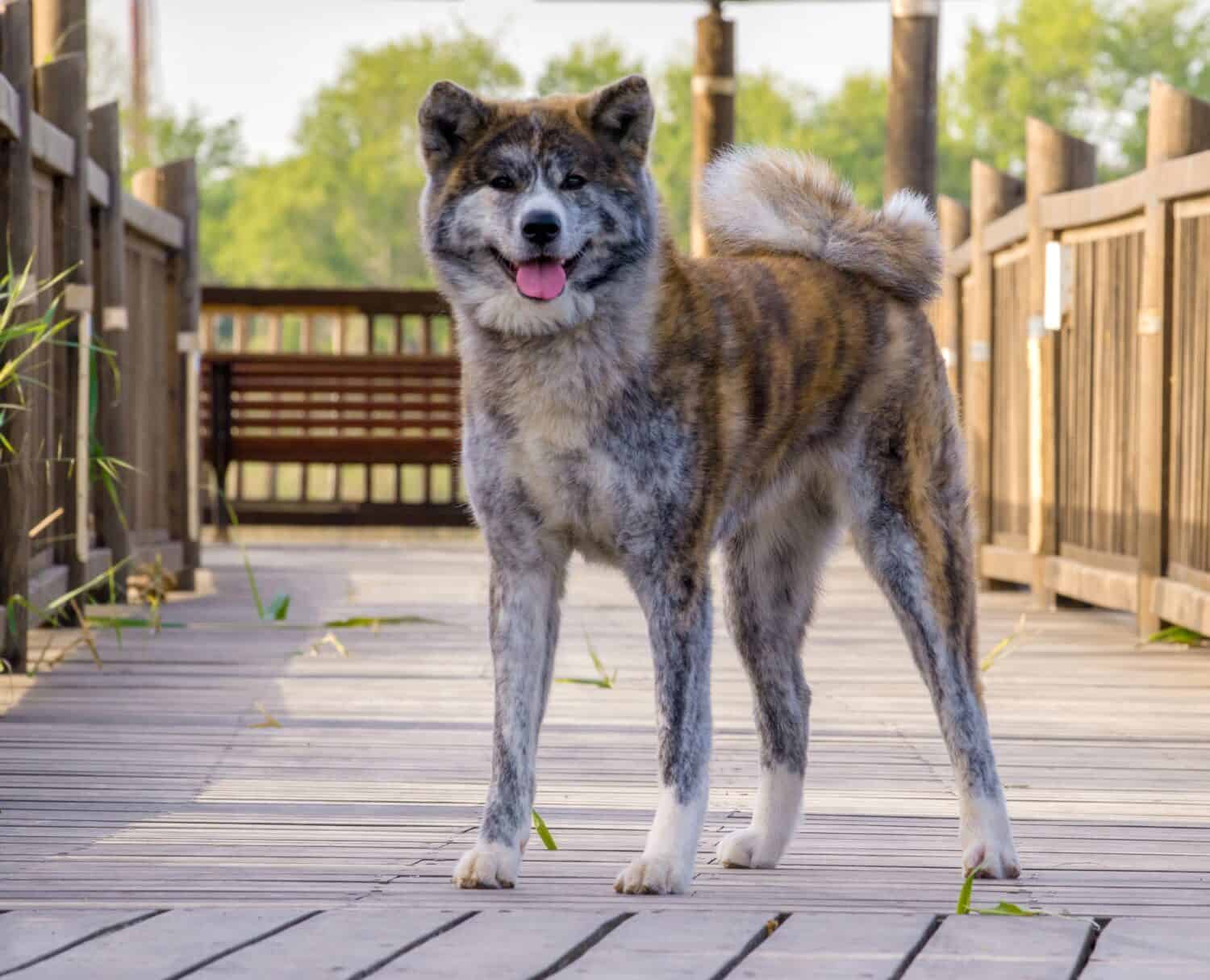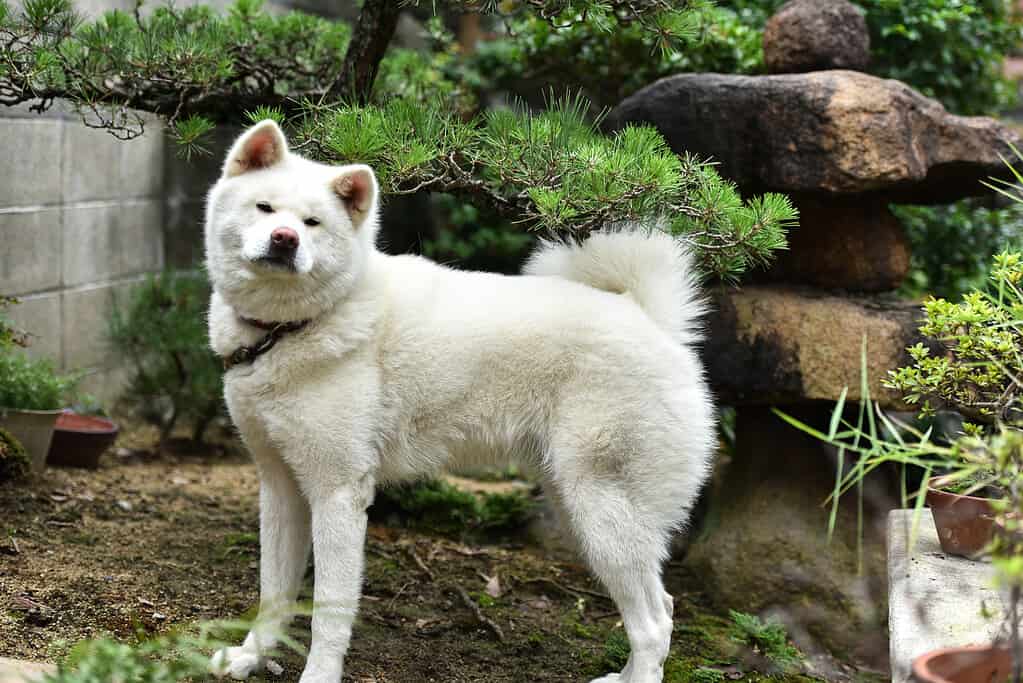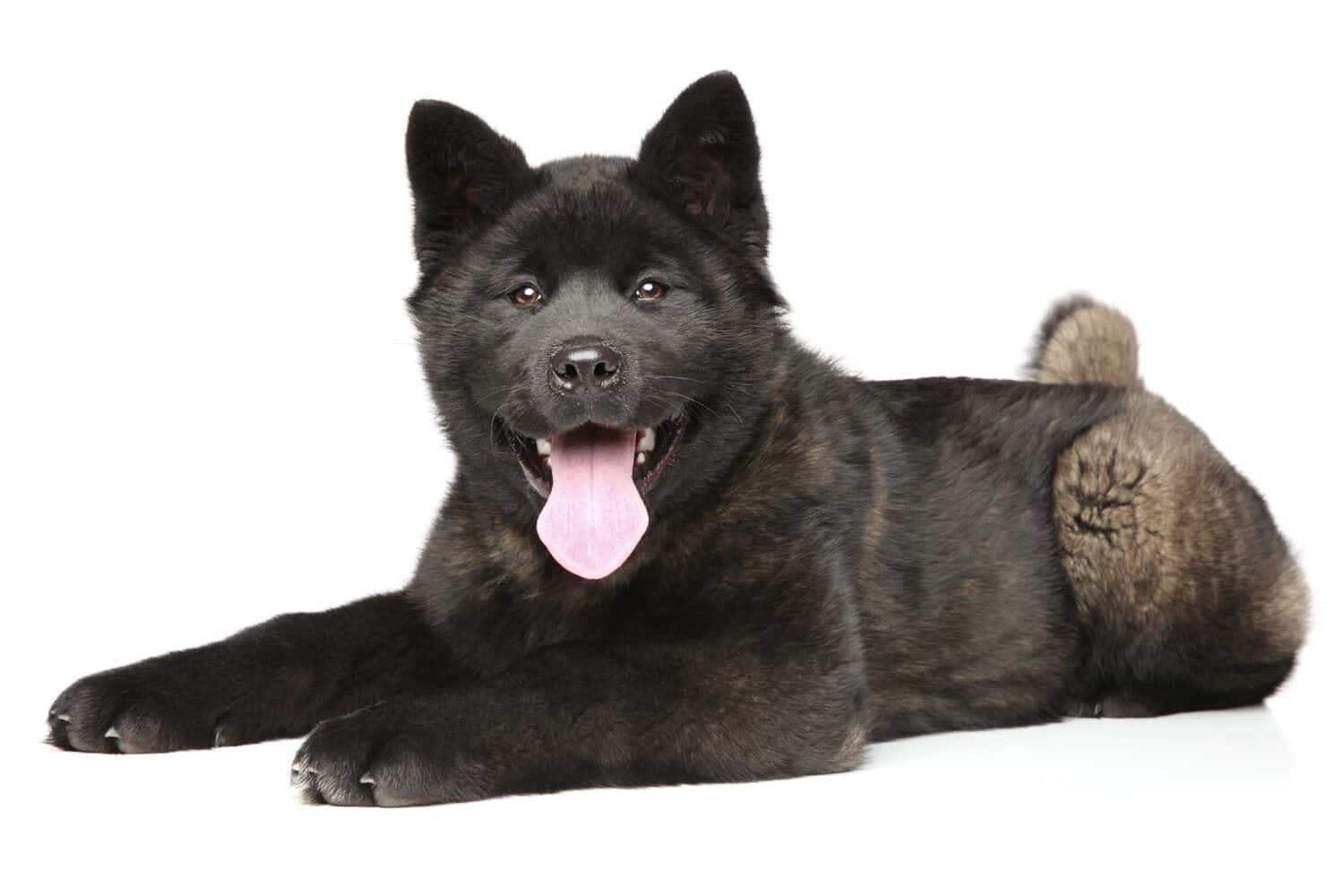Akitas are unique-looking dogs, a breed you don’t typically see everywhere. Their bodies are large and solid, and they have erect ears. The breed, known to be loyal and protective, originated in the snowy, mountainous regions of Japan.
The American Akita comes in a range of colors with numerous patterns. Let’s look at the most common to the rarest colors for an Akita. Remember that an Akita’s color doesn’t relate to their personality, so don’t worry about that when picking your new best friend!
Standard Akita Colors and Markings

Akitas come in an unbelievably wide range of colors, but red is very common.
©New Africa/Shutterstock.com
The American Kennel Club recognizes that these are the standard colors for Akitas:
- Black
- Fawn
- Red
- White
Akitas can also come in silver (more of a shiny grey) and brown, but they aren’t considered the standard. From all these main colors, Akitas can have many different markings. These include:
- Brindle (various striped patterns)
- Black overlay (dark shading)
- Fawn undercoat
- Pinto (white markings on a colored body)
- Masks of various colors (their face is a different color from their body)
As you can see, Akitas come in a beautiful range of colors and markings, which makes them even more spectacular as a breed. So, which are the most common to the rarest Akita colors? Let’s explore.
Fawn Akitas: Common

The Fawn-colored Akita often has a black face, known as a mask.
©iStock.com/Eduard_Mikrykov
Fawn-colored Akitas are one of the most common colors you see for the breed. Typically, a fawn Akita has a tan/beige colored body with some white markings, often on their legs and belly. This color combination may have a black face or black mask, as it is called. An Akita whose primary color is fawn may also come in various markings and patterns that include:
- Fawn with a black overlay
- Fawn brindle
- Black with a fawn undercoat
Red Akitas: Common

Red Akitas have a white underbelly.
©Tatyana Kuznetsova/Shutterstock.com
When you picture an Akita, this may be the color that most often comes to mind. A red Akita usually has a white face, underside, and legs, with a red back and top of the head. An Akita may also have red markings in various patterns, such as:
- Red, black overlay
- Red brindle
- White with red shading
Brindle Akitas: Less Common

Brindle Akitas have a stripe pattern and aren’t as common a color combination.
©PardoY/Shutterstock.com
A brindle Akita has black or brown stripes that almost look tiger-like. The color under the stripes can vary, with a range of combinations.
Silver Brindle: An Akita this color will have black stripes on a grayish-silver background.
Red Brindle: Black stripes will lay over the reddish color Akitas commonly feature.
Brown Brindle: You’ll see black stripes on a brown background that may look more like brown stripes on a black background if the Akita is heavily patterned.
Fawn Brindle: This rare combination of black stripes on a pale tan body doesn’t appear too often.
Black Brindle: These color dogs are quite rare and look more like solid colors than patterned with stripes.
White Akitas: Somewhat Rare

Entirely white Akitas are rarer for the breed.
©iStock.com/Harada Tatsunari
The snowy white Akita is beautiful but less common. A white Akita is precisely that — it has the same color undercoat and overcoat. However, some white Akitas may have a slight red tint to their fur, known as white with red shading.
Additionally, Akitas can come in a color called Pinto. That means they can be any color but have white markings and a white head.
Black Akitas: Rare

Black is a rare color for the breed.
©Jagodka/Shutterstock.com
This is the rarest Akita color you’re likely to see. A Black Akita may have different shades of dark colors or even some white on its underbelly. As for seeing a purely one-color black Akita, it’s less likely to happen.
Akita Colors, Common to Rare:
| Fawn | More Common |
| Red | More Common |
| Brindle | Somewhat Common |
| White | More Rare |
| Black | Rare |
The photo featured at the top of this post is © TatyanaPanova/Shutterstock.com
Ready to discover the top 10 cutest dog breeds in the entire world?
How about the fastest dogs, the largest dogs and those that are -- quite frankly -- just the kindest dogs on the planet? Each day, AZ Animals sends out lists just like this to our thousands of email subscribers. And the best part? It's FREE. Join today by entering your email below.
Thank you for reading! Have some feedback for us? Contact the AZ Animals editorial team.







